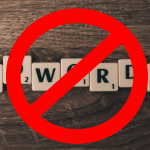One thing to remember about marketing is that it’s different from sales. Its purpose is to suggest to prospects that they might need your business even if they don’t know it already, while the purpose of sales is basically to get out of their way once they come looking for you. That said, we’ve seen it REALLY messed up.
Ask yourself these questions to determine if you’re getting in your own way.
Does your marketing copy “shout” at people?
Every time I see a street preacher, I think, there’s a guy who’d fit right into the wellness market. He’s darn sure he knows what’s right, he’s bent on changing minds, there’s hell to pay if you don’t change NOW, and if you ignore him, he just shouts louder.
The truth is, even when you’re on a mission to save people from blindness, pain, and early death due to cardiac disease, you still need to talk to them one-to-one and convince them to want you.
Picture your prospect in your mind, picture their newborn curiosity about how to change their lives, and feed it.
If you nurture curiosity, it will grow. If you nurture doubt, guilt, and despair, they will grow instead.
Do you emphasize problems over solutions? Negatives over positives?
When you talk to folks, whether in person or in your marketing copy, emphasize the positive.
I receive a regular marketing email from my local gym exhorting me to “get started losing those pounds.” The problem is that the copy suggests that the only reason anyone would work out at that gym is if they weigh too much and don’t like it. I don’t dispute the truth of this, but it’s a bad way to market the experience that regular gym-goers have come to treasure as “me time”, zoning out, de-stressing, meditative, and refreshing.
When people don’t already want you, you have to make your message appealing. That’s hard to do when you’re calling somebody you don’t even know fat and lazy.
Take a close look at the first communication your prospects will likely receive from you about your business. What does it say? Would YOU want to hear that?
Do you spend more time on the wind-up than you do on the pitch?
We all know obesity is an epidemic. But facts don’t compel action.
Cut to the chase: your business helps people see a way forward. Talk about that.
If someone’s reading your web page, it’s not because they don’t know that eating healthy is good for you. It’s because they’re looking for answers, a way to take action, and a way to re-take control of their lives.
Spend only a moment making sure you’ve got the right person listening (Do you feel tired all the time? Can’t move like you use to? etc.), then get specific about the little steps your prospective customers can take right now to start changing their lives and feel good about it (Try our free introductory class OR Learn how Dave got his mojo back, along with his abs).
Do you keep marketing when you should be selling?
This is the flip side of the point above. If you spend too much time marketing before OR AFTER people buy into the benefit of your products or services, you’re undoing your own marketing.
There’s a point at which if you keep drumming on the solution, people start to see less value. There seem to be TOO many benefits. So much free stuff that they wonder if what they’re paying for is actually worth anything. Or they just tune out.
Remember, marketing’s purpose is to determine if your products and services are a fit for potential customers, and then cement that confidence in their minds. If it’s already cemented, stop talking and start listening. Once people are sold, they’ll have questions, concerns, potential objections or conflicts. You can answer those individually in your sales literature.
If you must keep marketing, finish those sales, then market something else — for instance, an upgrade to their membership.
Is the scope of your marketing too wide?
We’ve seen clients who described to us their ideal customer: “Men, aged 35-45, in City, State with income in range XYZ.” There’s a problem with that. It’s a great way to filter a lead list, but it says nothing about the mindset, motivations of buying behavior of the prospect. Not all 35-45-year-old men want the same thing from a wellness business. Some lack motivation, some are motivated but don’t have a training plan. Some are training for ultra endurance sports.
Your wellness business is not the ideal fit for ALL of these types. It can’t possibly be.
When both writing your marketing copy and doing lead generation, look for opportunities to connect to the mindset. Picture a specific group of people in a demographic and ask yourself:
- Where do they live?
- If they don’t stop by my business today, why was that? (traffic, picking up kids from school, dinner, etc.)
- Why go to your business and not the one down the street? (we’re cleaner, we’re open longer, we have a pool, we have more one-on-one time with trailers)
- What do they hope to get out of their experience? (tone up in time for high school reunion, fit into a wedding dress, drop a belt notch, earn an Ironman tattoo)
- How can you help them get what THEY want?
If you’re not sure what they want — or you’re concerned they might not want what you have — keep picturing people until you have one in your mind that just can’t NOT visit your storefront. Now… (s)he doesn’t know about you yet. How do you get the message out?
Marketing to anyone else is just shooting into the dark, or worse, at the wrong target.
There’s no way you can out-sell bad marketing.
Is the scope of your marketing too narrow?
On the other hand, it’s possible you’ve over-qualified your leads, especially if you have a really clear picture of who you intend to sell to.
It’s great if you know you’re selling anti-blister socks to ultra runners, or ice climbing equipment to mountaineers. But if the size of your potential market is 600 people out of a potential 1,000,000 you have a problem. You can mitigate that problem by taking things online, but only up to a point.
You may have to think of how your product might appeal to novel audiences.
I saw an ad recently for a $500 headlamp for night running. 770 lumens — twice as bright as an automobile headlight. It was crushproof, waterproof, and lasted an entire week on the low power setting. But $500? For a running lamp? I doubted there were enough trail runners in the world who’d shell out that kind of money.
But construction companies will.
Do you market the same solution to everyone?
The transformational weight loss program that started you on your journey to wellness is YOUR journey. Market that journey all you want, but realize that the only people who are going to buy into it are people EXACTLY like you. The same problems, the same worries, the same difficult bridges crossed or waiting to be crossed.
That’s fine if there are enough such people in your service area or you’re capable of expanding your sales into new geographies or marketing to an online audience. But chances are that you’re still looking for carbon copies of yourself to sell to. Sooner or later you’re going to run out of people like that.
Try thinking about why OTHER people might want your products and services. Get a focus group together and brainstorm, or hire a consultant to go over scenarios with you. Then create marketing and sales copy that tracks with THEIR journey, reinforcing and building confidence each step of the way.
If you want those customers — really want them, and your solution is not right for them, you have two choices: change your solution or walk away.
Do you market the same way to everyone?
If you have Google Analytics, take a look at both your paid and organic traffic, especially the flow section. What pages do people visit and where do they go from there? Do visitors go straight to your 9-week carb-detox plan? To your landing page for the search ad about Men’s Low Impact Sixpack-Ab Workouts? Or do they wander around looking for something and then leave? Get a heatmap tool to analyze where on your site people click the most.
You’ll likely see one of two things: either a fairly straight series of clicks from your landing page or home page, through another page or two of specific content discovery, to Contact Us or Maps & Directions or Enroll Now. If you don’t, there’s something your site doesn’t do for visitors.
Examine those visitor behaviors and consider changing your content to nurse the process along — especially if your current content contains stale factoids and no clear and compelling call to action.
Does your business Facebook page contain wellness rants?
Keep in mind that your social presence is one of the most visible parts of your business.
There are several reasons that opining on why people should change, why they don’t change, and similar topics just doesn’t help. And they’re strictly business:
- They suggest that whether or not you have an answer, you haven’t listened to the question.
- They create feelings of guilt and resentment, not action.
- They tell prospective customers that your business is not only judgmental, but has judged them even before they arrive.
- They’re not effective marketing or sales copy.
Remember, on social media, if you speak out, you’re representing your business. Your message is telling people about you and your business. If it doesn’t create curiosity, build confidence, and remove doubt, it’s a major roadblock to acquiring new customers.




